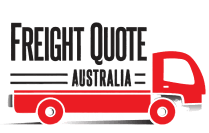“Top Load Only?”
If you’re requesting a courier quote from a transport company or freight broker, you might find yourself being asked if your assignment is “top load only”. What does top load mean, and why does it impact the cost of the load move in Australia? If “top load only” applies to your freight, make sure to note this when requesting a freight quote.
“Top load only” means exactly what it implies, ie. that goods cannot be stacked underneath any other consignment. This is typically due to the fragile nature of the goods but in some cases may also be due to the fact that the peculiar shape of the assignment doesn’t lend itself to having any objects stacked on top of it.
Most large transport vehicles are confined to carrying loads of up to 2 metres; some slightly less, and some more. But 2 metres is often the maximum permissible height of a pallet. In the world of logistics, the default aim of every freight provider is to make the most use of the available carrying capacity. Since many of the consignments being moved will take up less than the maximum height, eg. 2 metres, transport companies will often unload and reload trucks strategically, stacking consignments on top of each other in order to make the maximum use of the space. When a consignment is marked “top-load only”, it means that the transport company has an additional challenge on their hands, ie. they need to find some suitable cargo to place under your goods in order to fit it in.
If “top load only” applies to your freight, make sure to note this when requesting a Freight Quote.
Take the example of a 12-tonne truck, which at its fullest will be able to carry 10 full pallets. 8 pallet spaces are already being used, so 2 pallet spaces are available. Along come an additional 2 units of freight to load, each 80cm tall and both marked “top load only”. Even though technically the 2 pallets combined are using up less metric volume than the truck’s carrying capacity, in reality it is costing a full 2 pallet spaces, since neither of these items can be stacked on top of each other. This cost will be reflected in the courier quote.
Before marking an item to be transported as “top load only”, consider first if it is actually necessary. If required, would it be able to withstand the weight of a pallet being stacked on top? If not, think carefully if there is some way you can pack the pallet to be able to withstand extra weight being placed on top, for example protecting the crushable items by placing them on the inside and packing the most robust goods on the outside. There is also the option of reinforcing your pallet, which may end up costing less than classifying your freight as “top-load only”.
Fragile goods can also be marked as such even though all freight must be packaged to be able to withstand the normal bumps and jolts of road transport. This can help in particular at the stage of the freight being moved between vehicles. If the freight company can be tipped off to the fact that it’s fragile, it can encourage them to take a bit of extra care when handling.

